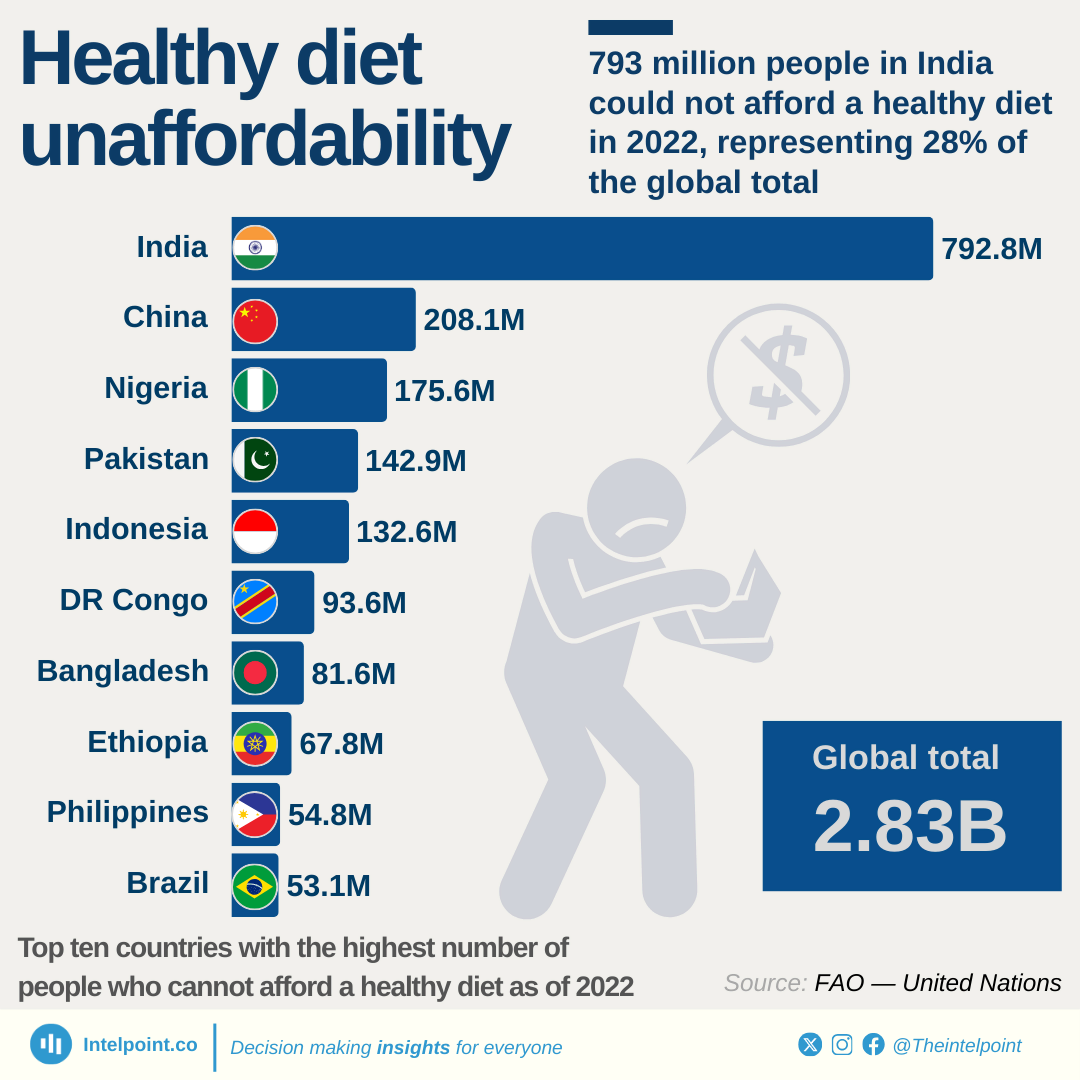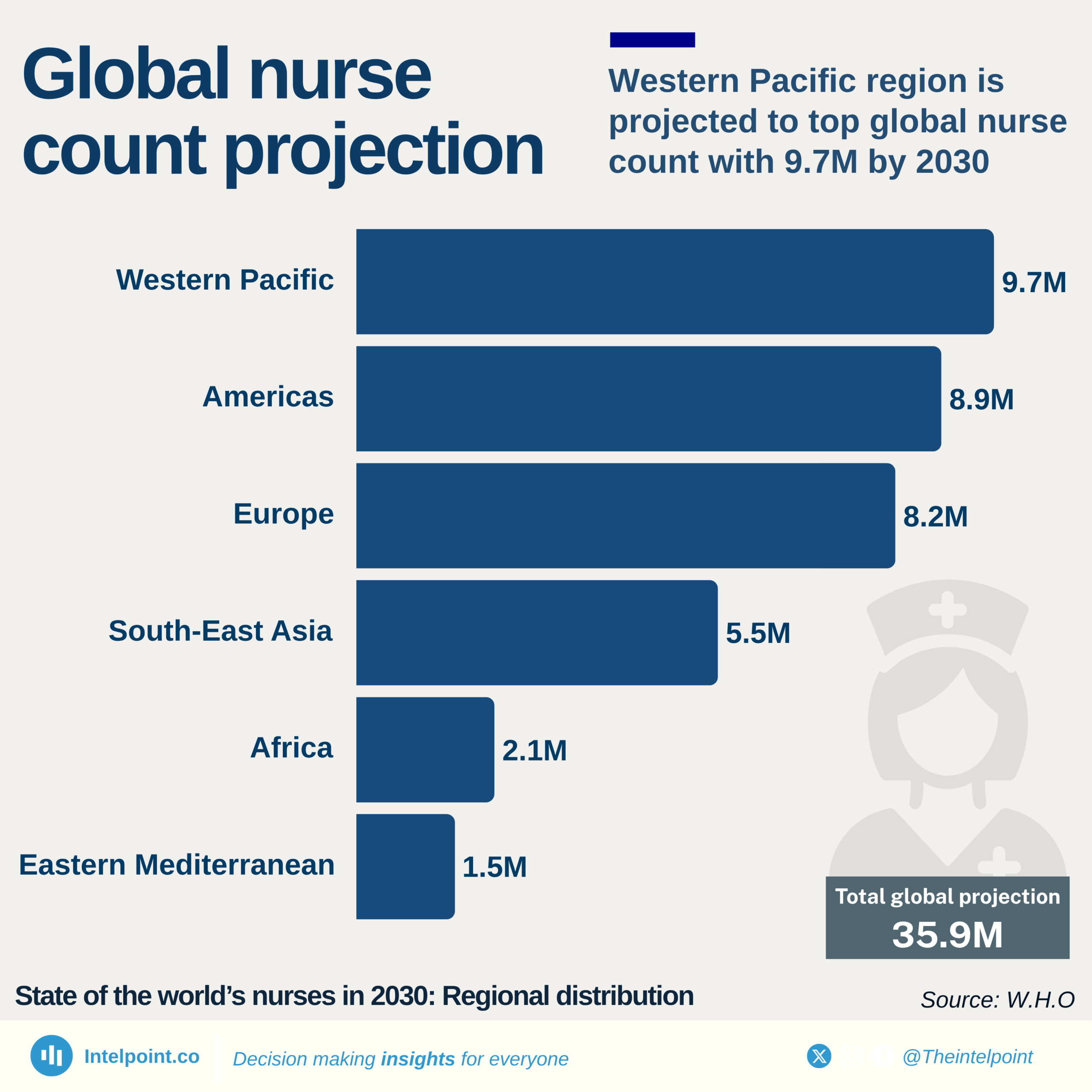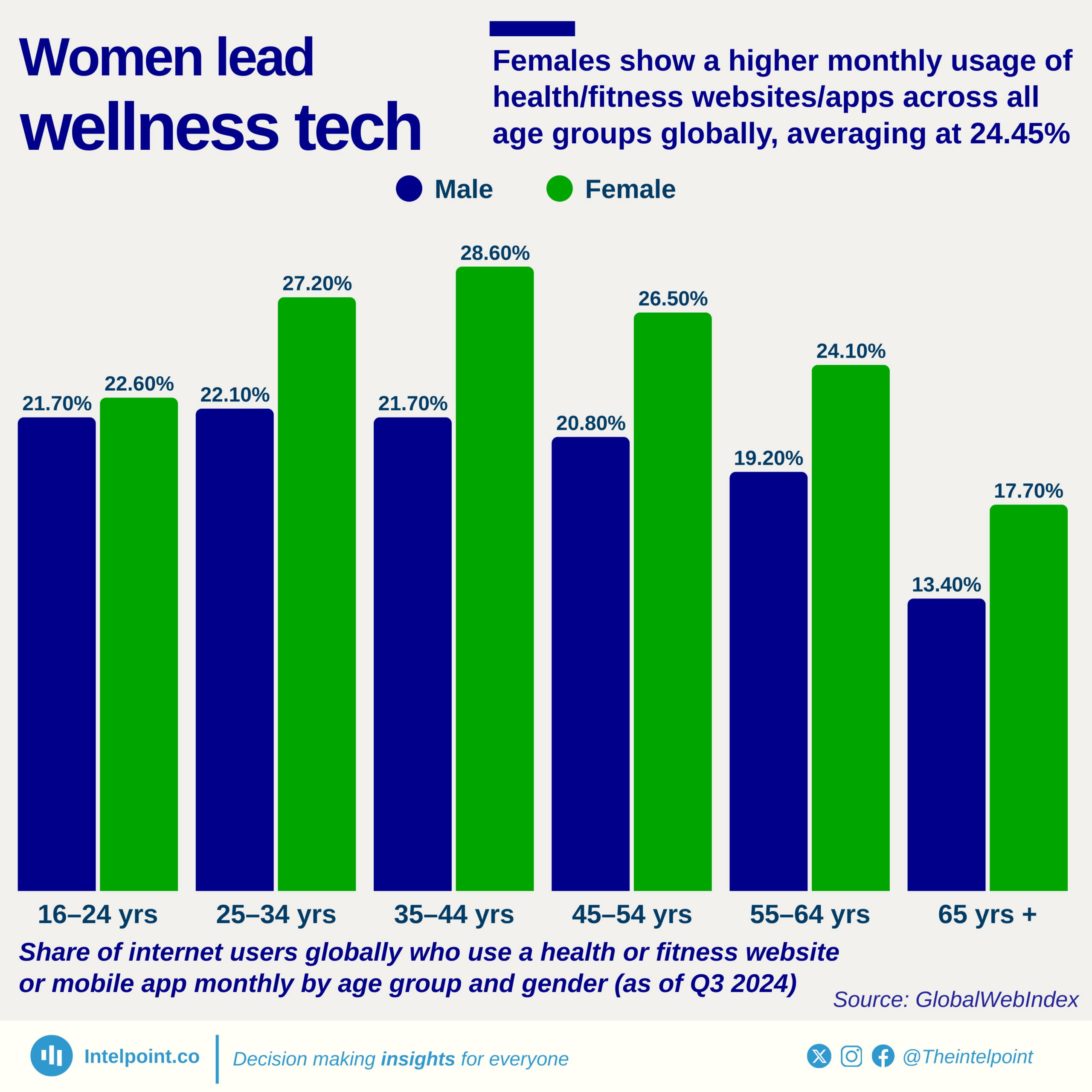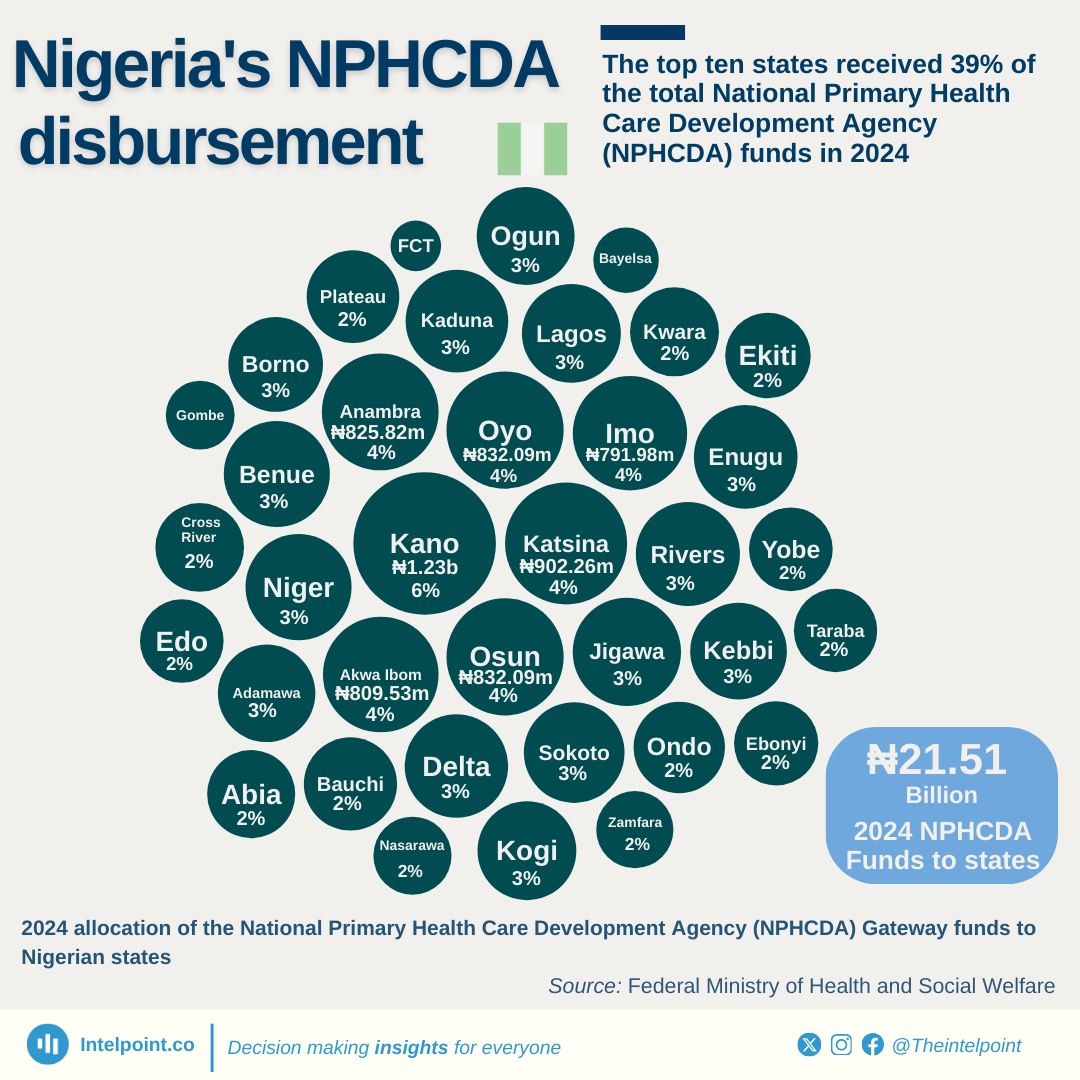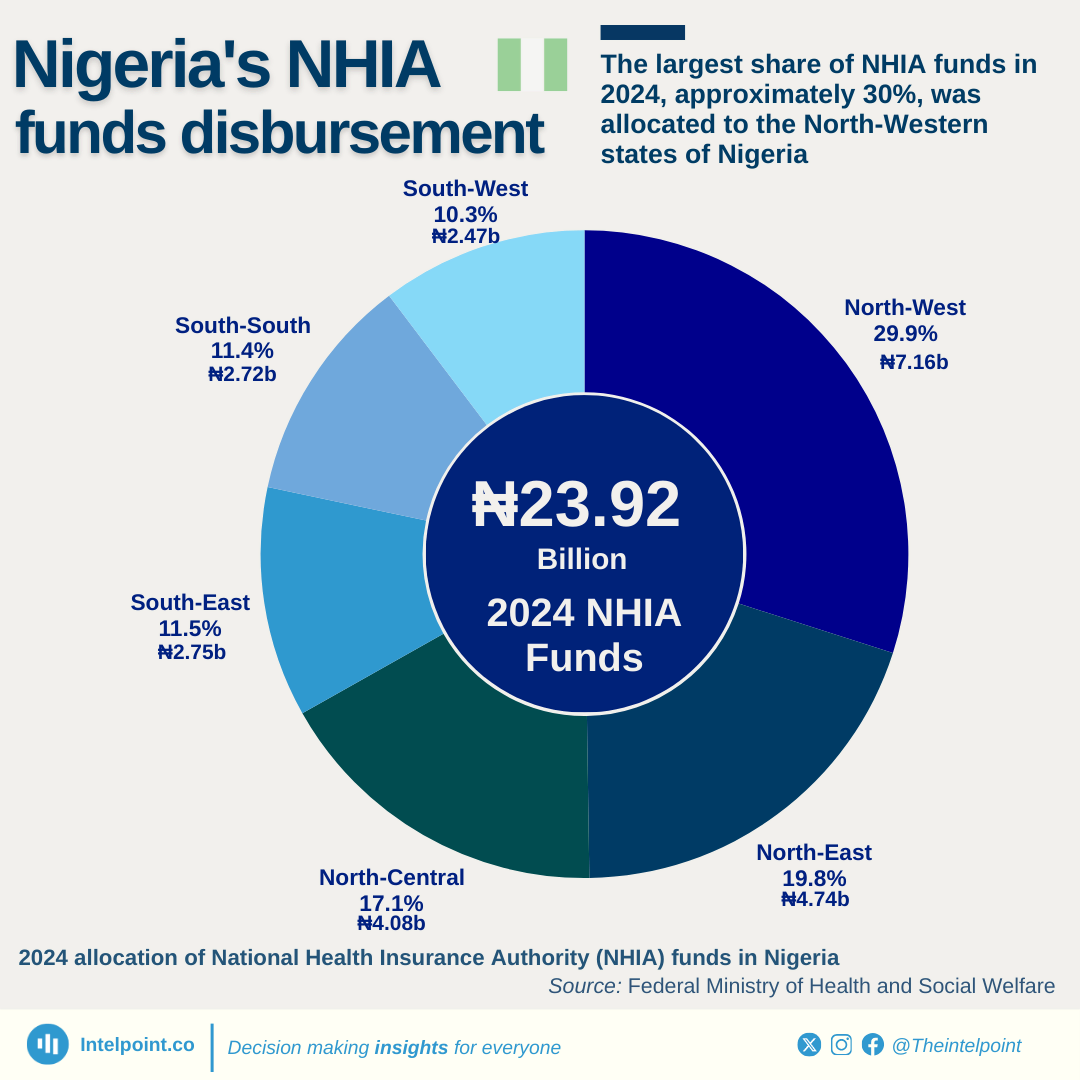As of 2022, only four African countries meet the WHO’s recommended minimum of 44.5 nurses and midwives per 10,000 population. Seychelles ranks highest with 73 personnel per 10,000, followed by South Africa (64), Namibia (54), and Ghana (45). Eswatini comes close with 44 but falls slightly short of the benchmark. These figures reflect relative progress in healthcare human resources within these nations.
The chart highlights the top 20 countries out of 47 assessed across the continent. All countries in this top tier have at least 16 personnel per 10,000 people. Notably, countries like Nigeria, Comoros, and Mauritania close out the list at the threshold of 16, while the remaining 27 countries fall below this figure. The data underscores the wide disparities in nursing and midwifery coverage across Africa’s healthcare systems.

